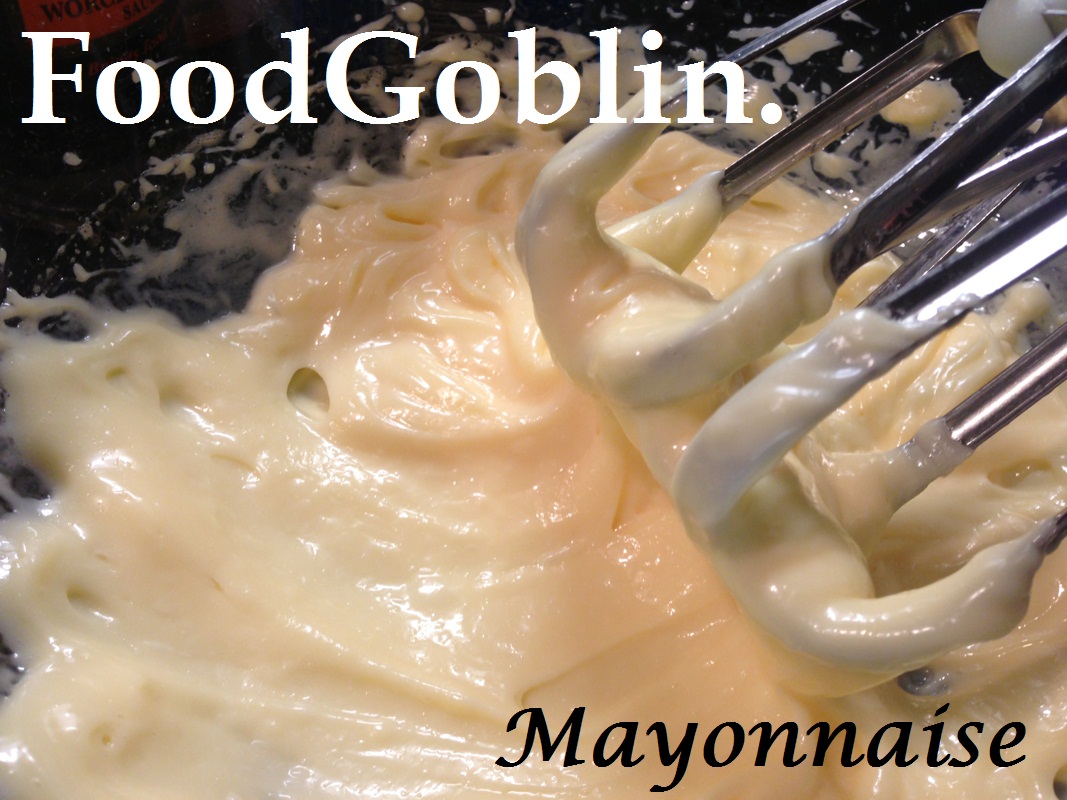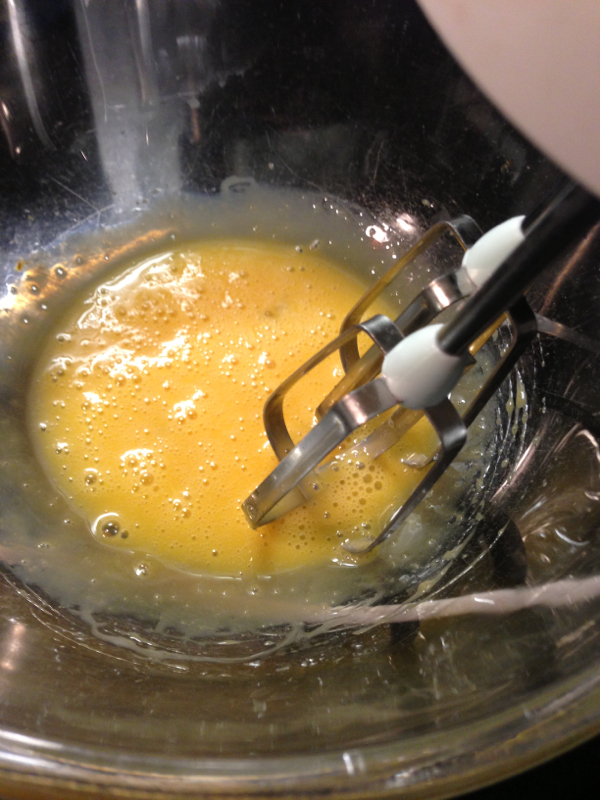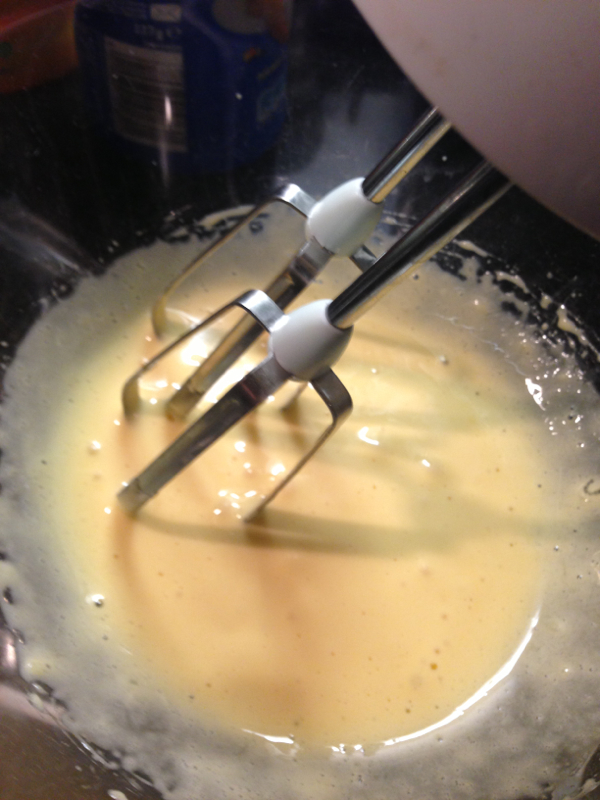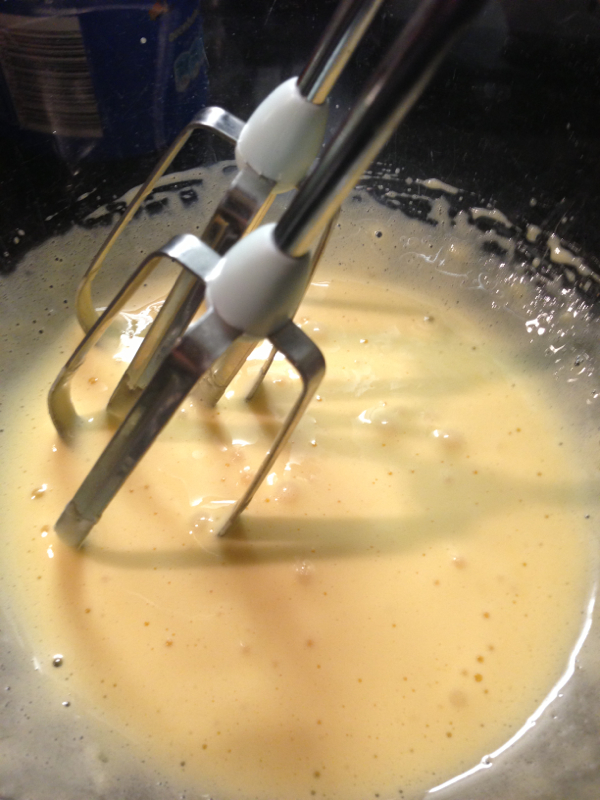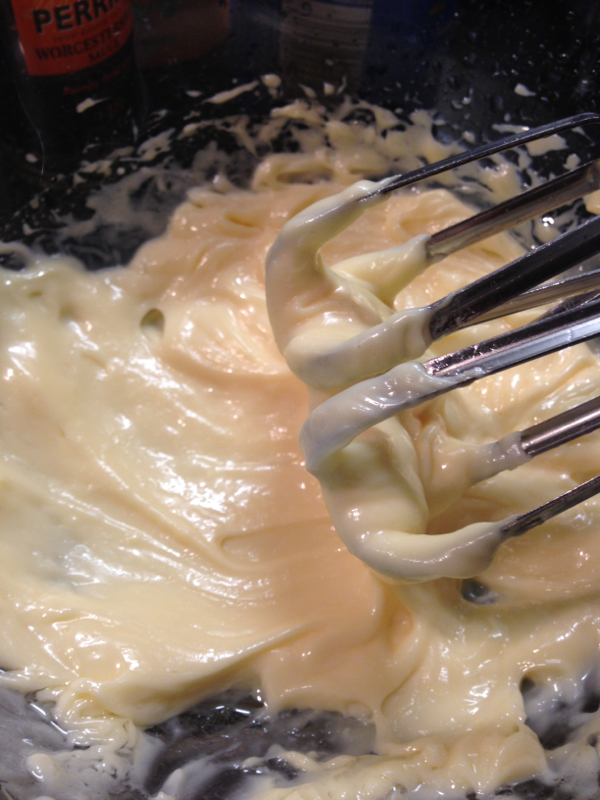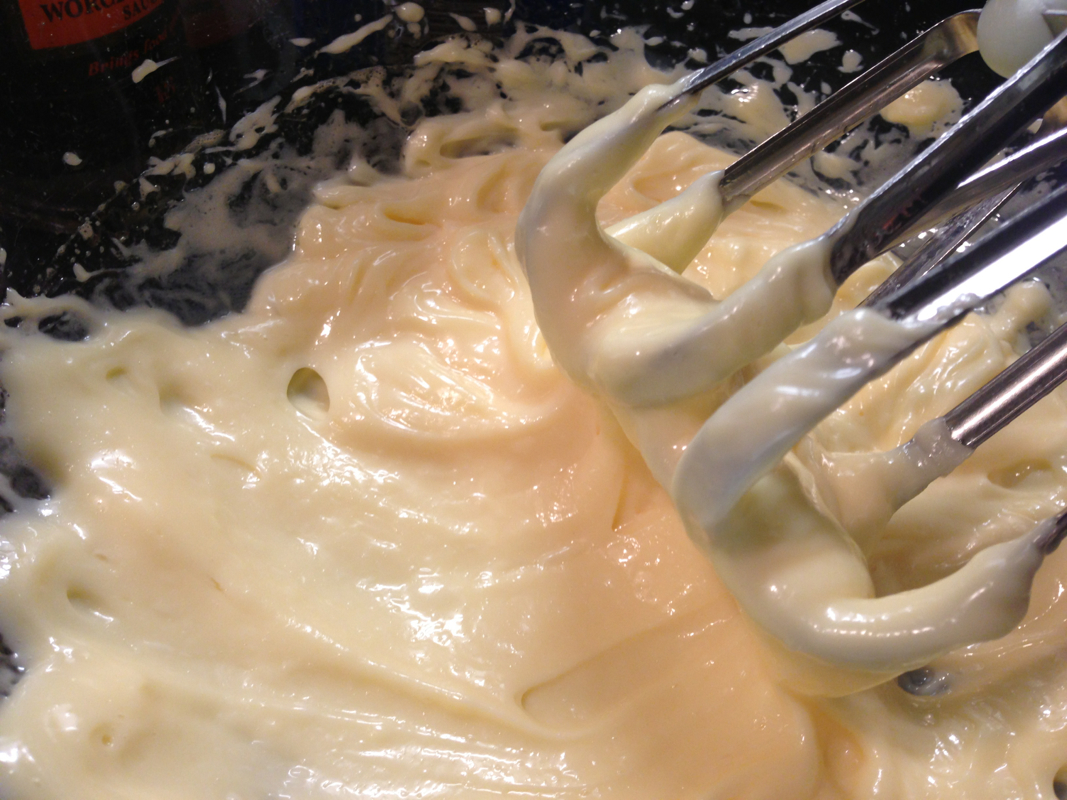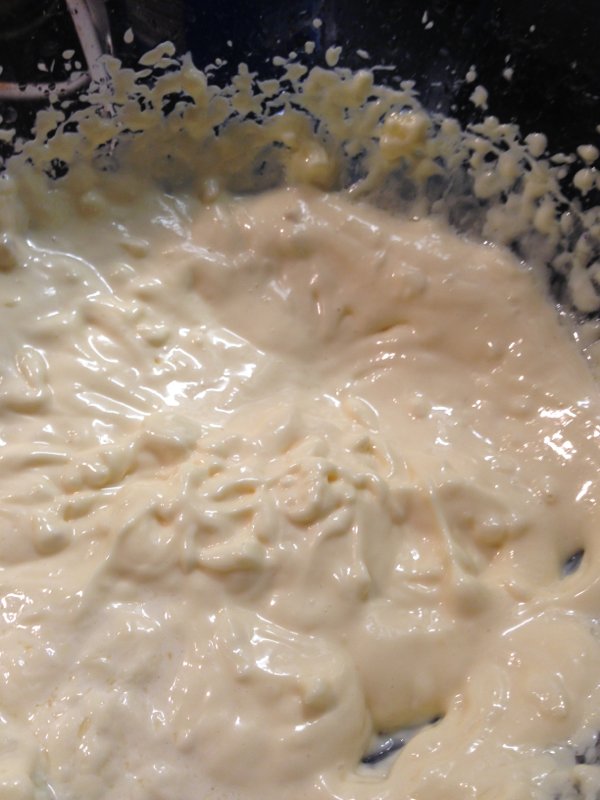Mayonnaise. One of life’s essentials. I love it. My reputation for loving mayonnaise spans seas and continents- I have it on everything. Ketchup, pfft. Don’t bother me with that. Take me to Belgium and slather it on thick.
PLUS it’s so easy to make yourself! However, one thing that always amuses me is seeing people’s faces when they see it made for the first time. We all know that it isn’t particuarly good for us, but the sheer proportions of its constituents can be mildly shocking. Just SO MUCH OIL.
Mayonnaise is an emulsion sauce – a sauce made from the combination of fat with oil. These two ingredients aren’t good friends, they don’t like to hang out. Naturally they separate. And so, extra attention is needed to merge them, just like with a Hollandaise Sauce. The trick is speed, or in fact the very opposite of that. When adding your oil, do so painstakingly slowly, dribble by tentative dribble and make sure that each is thoroughly mixed in before adding the next. If you go too fast, the two will separate and you’ll end up with a curdled mayonnaise. See step 1 below too for a way of avoiding splitting.
There is also debate on the type of oil to use. I use groundnut or sunflower. Pure olive oil comes out too bitter for me, although I like to add a dribble at the end for a slightly fruity twinge. Finally, mayonnaise unseasoned pretty much tastes of nothing. You’ll need to season it to add flavour and this is another thing that is so epic about homemade mayonnaise – you can totally personalise it – more than you can do with a Hellman’s jar! Classic additions are mustard, lemon, salt and pepper, but you can ramp it up a bit with garlic or herbs too if you like.
Anyway – give this a try; it’s a classic and an absolute essential for all cooks.
PLUS it’s so easy to make yourself! However, one thing that always amuses me is seeing people’s faces when they see it made for the first time. We all know that it isn’t particuarly good for us, but the sheer proportions of its constituents can be mildly shocking. Just SO MUCH OIL.
Mayonnaise is an emulsion sauce – a sauce made from the combination of fat with oil. These two ingredients aren’t good friends, they don’t like to hang out. Naturally they separate. And so, extra attention is needed to merge them, just like with a Hollandaise Sauce. The trick is speed, or in fact the very opposite of that. When adding your oil, do so painstakingly slowly, dribble by tentative dribble and make sure that each is thoroughly mixed in before adding the next. If you go too fast, the two will separate and you’ll end up with a curdled mayonnaise. See step 1 below too for a way of avoiding splitting.
There is also debate on the type of oil to use. I use groundnut or sunflower. Pure olive oil comes out too bitter for me, although I like to add a dribble at the end for a slightly fruity twinge. Finally, mayonnaise unseasoned pretty much tastes of nothing. You’ll need to season it to add flavour and this is another thing that is so epic about homemade mayonnaise – you can totally personalise it – more than you can do with a Hellman’s jar! Classic additions are mustard, lemon, salt and pepper, but you can ramp it up a bit with garlic or herbs too if you like.
Anyway – give this a try; it’s a classic and an absolute essential for all cooks.
Recipe
Ingredients (makes about 290ml or 1/2 pint):
2 egg yolks
pinch sea salt
250ml groundnut or sunflower oil
25ml extra virgin olive oil
1 tbsp Dijon mustard
2 cloves garlic, minced
Juice of 1 lemon (or to taste)
Method:
1. Whisk your egg yolks with an electric whisk for two minutes until they are thick and pale. Add the salt and whisk for 30 more seconds until they are thick and sticky. Some recipes don’t have you do this stage however, whisking them up like this makes the yolks ready to receive the oil and tends to avoid them splitting.
2. Continue whisking, but add the oil in a thin, very slow dribble. About a tablespoon at a time, whisking between each and making sure each dribble is mixed in thoroughly before adding the next.
3. Once you have reached the consistency you want (you might not need all of the oil) add the olive oil and beat for a further 30 seconds. Add the lemon juice, mustard and garlic and whisk in. Taste and adjust the seasoning if required.
4. Add any other seasonings you fancy – e.g. chopped herbs, more garlic, etc. This can be kept in the fridge now, sealed, until you are ready to eat it!
Ingredients (makes about 290ml or 1/2 pint):
2 egg yolks
pinch sea salt
250ml groundnut or sunflower oil
25ml extra virgin olive oil
1 tbsp Dijon mustard
2 cloves garlic, minced
Juice of 1 lemon (or to taste)
Method:
1. Whisk your egg yolks with an electric whisk for two minutes until they are thick and pale. Add the salt and whisk for 30 more seconds until they are thick and sticky. Some recipes don’t have you do this stage however, whisking them up like this makes the yolks ready to receive the oil and tends to avoid them splitting.
2. Continue whisking, but add the oil in a thin, very slow dribble. About a tablespoon at a time, whisking between each and making sure each dribble is mixed in thoroughly before adding the next.
3. Once you have reached the consistency you want (you might not need all of the oil) add the olive oil and beat for a further 30 seconds. Add the lemon juice, mustard and garlic and whisk in. Taste and adjust the seasoning if required.
4. Add any other seasonings you fancy – e.g. chopped herbs, more garlic, etc. This can be kept in the fridge now, sealed, until you are ready to eat it!

